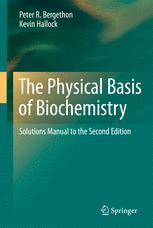

Most ebook files are in PDF format, so you can easily read them using various software such as Foxit Reader or directly on the Google Chrome browser.
Some ebook files are released by publishers in other formats such as .awz, .mobi, .epub, .fb2, etc. You may need to install specific software to read these formats on mobile/PC, such as Calibre.
Please read the tutorial at this link: https://ebookbell.com/faq
We offer FREE conversion to the popular formats you request; however, this may take some time. Therefore, right after payment, please email us, and we will try to provide the service as quickly as possible.
For some exceptional file formats or broken links (if any), please refrain from opening any disputes. Instead, email us first, and we will try to assist within a maximum of 6 hours.
EbookBell Team

5.0
60 reviewsThe Physical Basis of Biochemistry: Solutions Manual to the Second Edition offers solutions to the problem sets from the second edition of The Physical Basis of Biochemistry. The Physical Basis of Biochemistry is an introduction to the philosophy and practice of an interdisciplinary field in which biological systems are explored using the quantitative perspective of the physical scientist. As with the first edition, the idea that a fundamental understanding of the basic physical principles underlying chemical biological systems is vital remains the focus of this second edition. This new edition of The Physical Basis of Biochemistry has substantial new material added with respect to models at the simple molecular level (including van der Waals gases and virial treatments) which is tied to coverage of models of polymer thermo-dynamics. The second edition is partitioned into five sections: the central concept that science is a way of looking at the world; the physical under-pinnings of biophysical chemistry with an emphasis first on energy, work and forces of biological importance; exploring how models applicable to molecular biophysics are constructed; the three-dimensional potential energy surface put into motion; and a succinct discussion of the bio-physical methods used to evaluate structure and function in biological systems. Additionally, a section of appendices continues to serve the purpose of presenting some review information and certain topics in detail. The Physical Basis of Biochemistry will be of interest to quantitatively-oriented biologists as well as aspiring chemists, physicists, and engineers with an interest in biological systems.